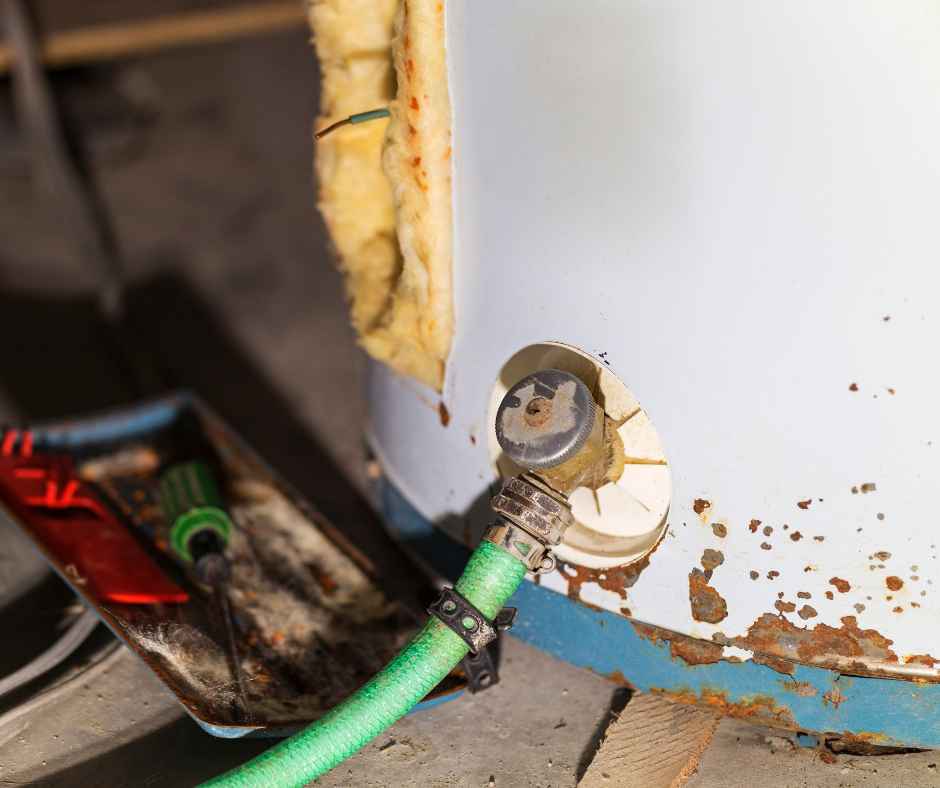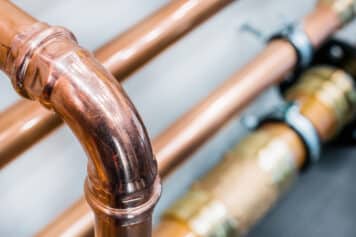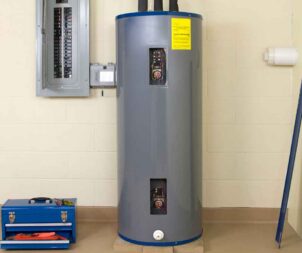
Hot water is a necessity in every household, but have you ever stopped to wonder, “How does a water heater work?” Understanding how these systems function can help you make informed decisions about your home and ensure proper water heater maintenance to keep things running smoothly.
This guide explains how a hot water heater works, covering both tank water heaters and tankless water heaters and why maintenance is essential for both types.
The Basics: How Does a Water Heater Work?
A water heater is a system that heats and stores water for use in your home. Depending on the type—tank water heater or tankless water heater—the process may vary, but the goal is the same: to provide reliable hot water for bathing, cooking, and cleaning.
How Does a Tank Water Heater Work?
A tank water heater is one of the most common types of water heating systems found in homes. Here’s how it works:
Water Storage
A tank water heater consists of a large, insulated tank (typically holding 30–80 gallons) that stores and heats water. Cold water enters the tank through a dip tube, which ensures the water is delivered to the bottom of the tank for heating.
Heating Element
Inside the tank, either a gas burner or electric heating elements heat the water. Gas-powered models use a burner located at the base, while electric models have heating elements submerged in the water.
Thermostat Control
The thermostat monitors the water temperature and activates the heating element when the water cools below the set temperature, typically between 120–140°F.
Hot Water Delivery
When you turn on a hot water tap, heated water is drawn from the top of the tank and replaced with cold water from the dip tube, keeping the cycle continuous.
Pressure Relief
A pressure relief valve ensures the tank doesn’t over-pressurize by releasing water if the pressure becomes too high.
While tank water heaters are reliable, they have limitations, such as the need for constant heating and the possibility of running out of hot water during high-demand periods.
How Does a Tankless Water Heater Work?
Unlike traditional tank water heaters, a tankless water heater heats water on demand. Here’s how it works:
Activation
When you turn on a hot water tap, cold water flows through the unit, triggering the system to heat the water.
Heat Exchanger
A gas burner or electric element instantly heats the water as it passes through a heat exchanger. There’s no need for a storage tank, which means hot water is available as long as needed.
Temperature Regulation
The system includes sensors to regulate the water’s temperature, ensuring it stays consistent regardless of flow rate or demand.
Energy Efficiency
Because it only heats water when needed, a tankless water heater is more energy-efficient than its tank counterpart, saving you money on utility bills.
While tankless water heaters provide unlimited hot water, they may struggle to keep up with simultaneous demands in large households without proper sizing.
Key Differences Between Tank and Tankless Water Heaters
- Energy Efficiency: Tankless models are more energy-efficient since they don’t maintain a reservoir of heated water.
- Space Requirements: Tankless systems are compact and can be wall-mounted, while tank water heaters require more space.
- Initial Cost: Tankless systems are more expensive to purchase and install but can save money in the long run.
- Capacity: Tank water heaters have a limited supply based on tank size, while tankless systems provide hot water on demand.
Why Water Heater Maintenance Matters
Whether you have a tank water heater or a tankless water heater, regular maintenance is essential for optimal performance, efficiency, and longevity.
For Tank Water Heaters:
- Sediment Removal: Over time, sediment from hard water builds up at the bottom of the tank, reducing heating efficiency and potentially damaging the unit. Flushing the tank annually can prevent this.
- Anode Rod Inspection: The anode rod prevents corrosion inside the tank. It should be inspected and replaced if worn out.
- Pressure Relief Valve Testing: Ensuring the valve is working correctly prevents dangerous pressure buildup.
For Tankless Water Heaters:
- Descaling: Mineral deposits can clog the heat exchanger, reducing efficiency. Regular descaling is necessary, especially in areas with hard water.
- Filter Cleaning: Tankless systems often include a filter to trap debris. Cleaning this filter prevents clogs and maintains proper water flow.
Ignoring water heater maintenance can lead to poor performance, higher energy bills, and costly repairs.
Signs Your Water Heater Needs Maintenance or Replacement
- Inconsistent Water Temperature: Fluctuating water temperatures may indicate a failing heating element or sediment buildup.
- Leaks: Puddles around your water heater can signal internal tank damage or loose connections.
- Unusual Noises: Rumbling or popping sounds often result from sediment buildup in tank water heaters.
- Age: Most tank water heaters last 8–12 years, while tankless water heaters can last 20+ years with proper care.
If you notice any of these issues, it’s time to schedule professional water heater maintenance or consider a replacement.
The Benefits of Professional Water Heater Maintenance
While some tasks can be performed by homeowners, professional care ensures:
- Comprehensive inspections to identify potential issues.
- Proper flushing and descaling to prevent damage.
- Recommendations for upgrades or replacements when needed.
Call Harris Now!
So, how does a water heater work? Whether you rely on a tank water heater or a tankless water heater, both systems provide hot water essential for daily life. Understanding their functionality helps you appreciate the importance of regular water heater maintenance to keep your system running efficiently.
If you’re due for water heater maintenance or suspect issues with your system, contact Harris Plumbing, Heating, Air & Electric today. Our expert team can ensure your water heater operates at peak performance, giving you reliable hot water when you need it most!



